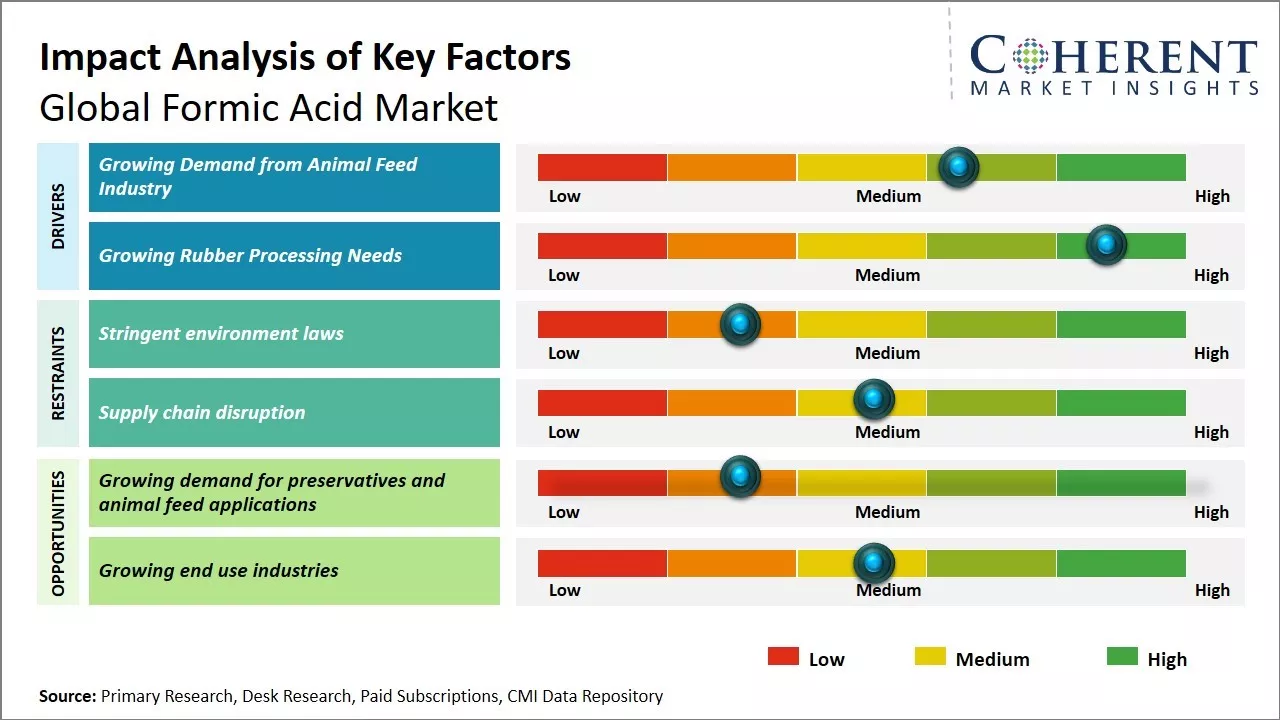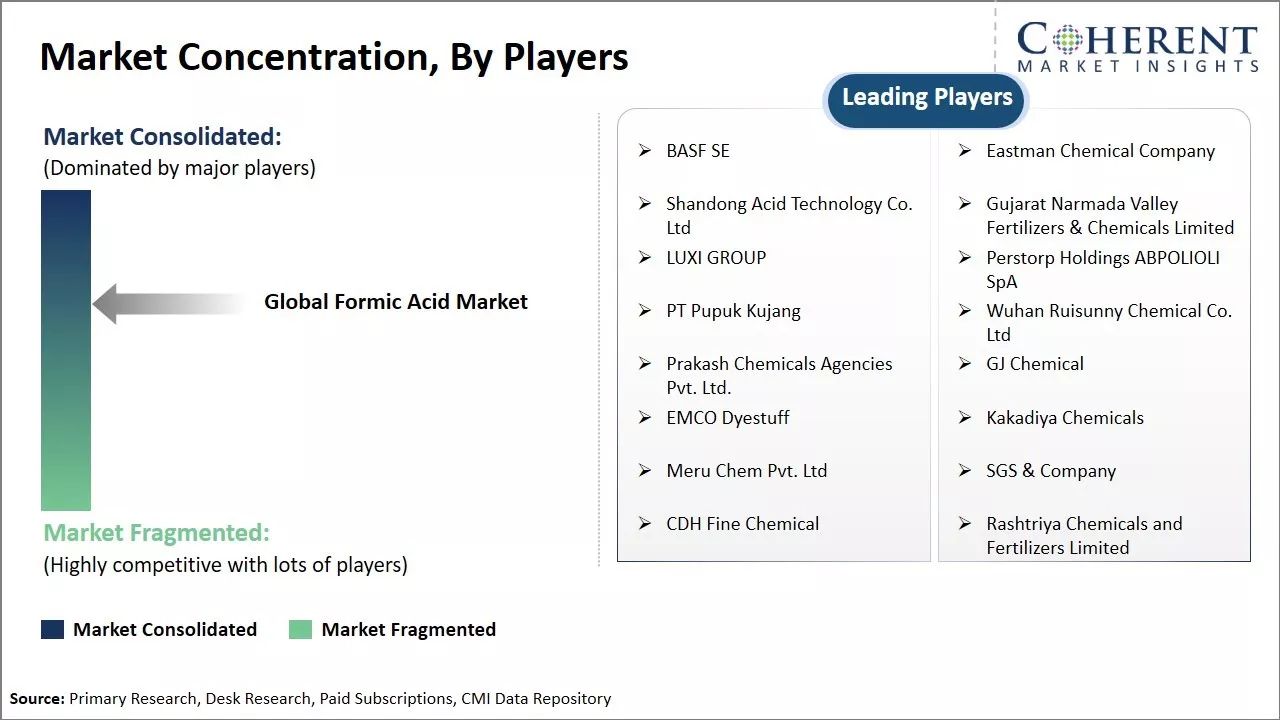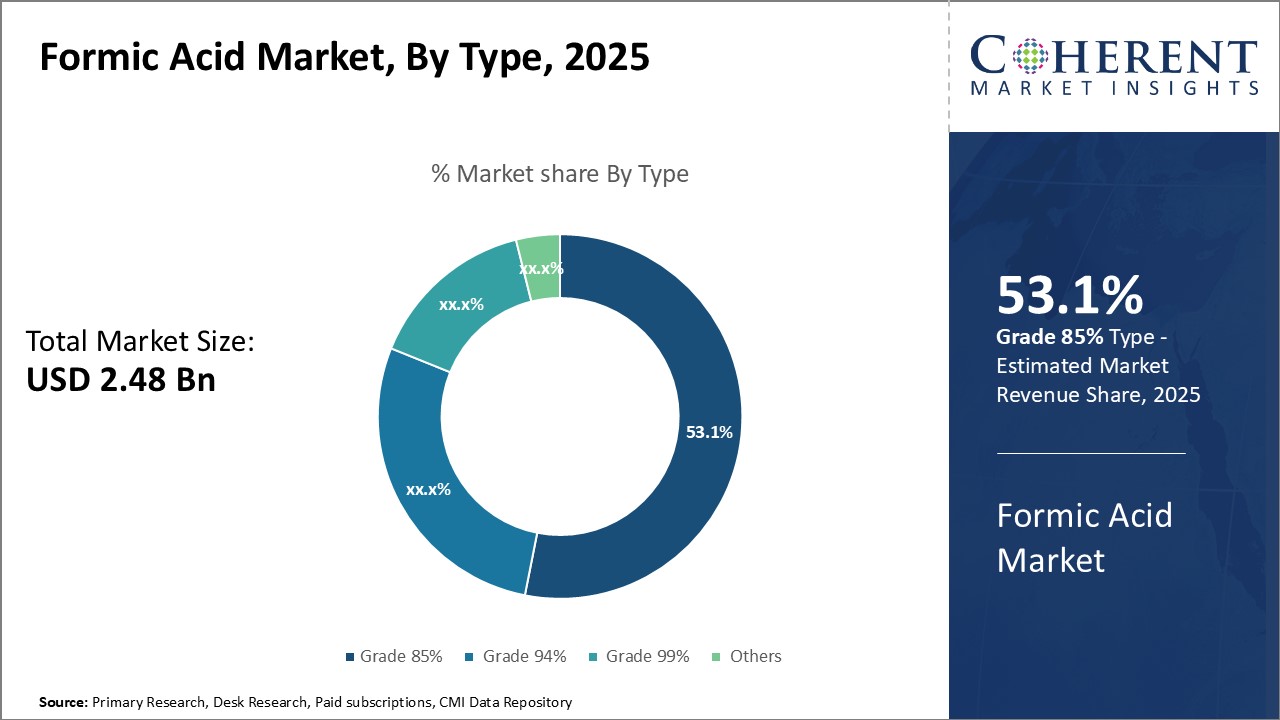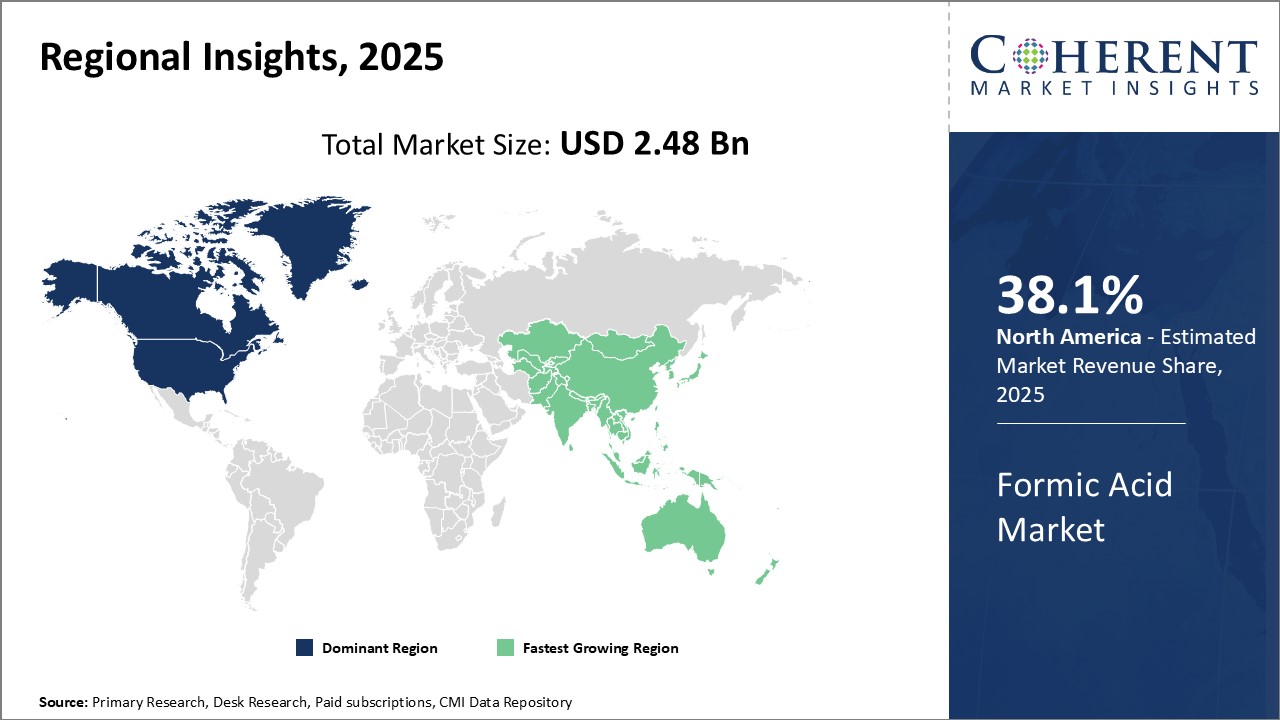The global formic acid market is estimated to be valued at USD 2.48 Bn in 2025 and is expected to reach USD 3.68 Bn by 2032, growing at a compound annual growth rate (CAGR) of 5.8% from 2025 to 2032.

Discover market dynamics shaping the industry: Request sample copy
Formic acid is mainly used as an animal feed additive and silage preservative. It plays a key role in food preservation and improving the nutritive value of forage crops. The growing meat consumption and emphasis on food safety are projected to drive the need for formic acid as an animal feed preservative. Rising demand for high-value crops is also likely to boost the consumption of formic acid as a silage preservative. Banning of antibiotic growth promoters will further augment the demand.
Growing Demand from Animal Feed Industry
Formic acid has emerged as an important preservative and acidifying agent for animal feed over the past decade. It helps inhibit the growth of molds and bacteria in livestock feed, extending its shelf life. With the consumer demand for meat and protein growing steadily worldwide, the animal feed industry has been expanding exponentially. Developing countries with increasing meat consumption like China and Brazil have ramped up commercial meat production. This has fueled the demand for high-quality commercial feed globally. Feed producers are increasingly adopting formic acid as it allows them to store compound feed for longer periods without deterioration in quality. This helps ensure the supply is maintained throughout the year for large livestock operations. Formic acid also improves feed conversion and digestion when used as an additive. Some studies have shown it can enhance weight gain and growth in poultry and pigs when supplemented in fiber-rich diets. With farmers looking to maximize productivity amid rising costs, formic acid offers an affordable solution. Regulatory acceptance of its use within limits in animal feed in major markets has further boosted commercial interest. The drive for protein self-sufficiency in Asia Pacific and other regions will support the rise of large-scale concentrated animal farming. This bodes well for the prospects of formic acid, finding greater uptake as a feed preservative and performance enhancer.

Get actionable strategies to beat competition: Request sample copy
Growing Rubber Processing NeedsAnother key factor propelling the demand for formic acid worldwide is the expansion of the rubber industry. Formic acid is extensively consumed in the processing of various types of rubber including synthetic and natural rubber. It acts as a catalyst during the final stage of synthesizing styrene butadiene rubber which finds wide usage in tire manufacturing. Almost 60% of the global rubber production is currently dedicated to tire manufacturing. With rising vehicle ownership and increasing replacement needs, the annual global tire production has been growing steadily at over 3% in recent years. This steady growth in the downstream tire industry naturally augurs well for formic acid consumption. Apart from tires, formic acid also plays an important role in processing rubber for other industrial products like conveyor belts, hoses, footwear, and others. As infrastructural development continues in emerging markets, the demand for such industrial rubber will keep rising. Synthetic rubber is also replacing natural rubber in many applications due to its superior properties.

To learn more about this report, Request sample copy
Challenges: Stringent environment lawsProduction of formic acid needs strictly controlled conditions to maintain quality and safety standards. Fluctuating prices of raw materials used in formic acid production adds to the challenges of cost control and business viability. Environmental regulations governing industrial emissions are becoming more stringent over time in many countries, requiring investments in abatement technology. Transport and storage of formic acid also requires specialized equipment and safety protocols due to its corrosive nature.
Opportunities: Growing demand for preservatives and animal feed applications
Demand for preservatives and animal feed applications is increasing with rising global meat consumption. Additionally, new applications in leather tanning and textile dyeing industries are expanding as well. As a platform chemical, it is seeing increased research into derivatives and end products with broader industrial uses. Efforts to make production technologies more efficient and improve waste handling can help tackle environmental issues and boost

Discover high revenue pocket segments and roadmap to it: Request sample copy
Insights by Type: Driving Growth in Grade 53.1% Formic AcidAmong the various type of formic acid available in the global market, grade 85% is expected to account for 53.1% share of the market share in 2025 owing to its widespread usage in applications that do not require the highest purity levels. As grade 85% formic acid is sufficient to achieve results in applications such as animal feed preservation and leather processing, it provides an excellent price to performance ratio, making it the preferred choice for many end-use industries. Its ability to serve the needs of a variety of cost-sensitive applications at an affordable cost has enabled grade 85% formic acid to capture significant market share over the years.
Insights by Application: Driving Growth in Animal Feed and Silage Additive Applications
The animal feed and silage additive segment is expected to hold 53.1% of the market share in 2025 in terms of formic acid usage due to its exceptional preservative properties. Formic acid is highly effective at preventing the growth of undesirable molds and bacteria when used as an additive for livestock feed and silage, allowing farmers to store high-moisture crops for long periods without significant spoilage. Its widespread adoption in this application can be attributed to the growing demand for meat and dairy products globally. As livestock producers look to maximize yields through improved feed preservation techniques, the demand for formic acid from the animal feed segment is expected to continue increasing substantially in the coming years.

Need a Different Region or Segment? Customize now
North America has established itself as the dominant region in the global formic acid market over the past few decades and is expected to hold 38.1% of the market share in 2025. With the large presence of key manufacturers from countries like the U.S. and Canada, the region accounts for the lion's share of the global production capacity. The region is home to several manufacturing facilities of industry leaders who have pioneered production technologies for formic acid. In addition, the wide availability of raw materials and growth of end-use industries have further aided market growth. North America also has a well-developed transportation and logistics infrastructure which helps in the easy movement of formic acid and related products within the region and overseas.
Asia Pacific has emerged as the fastest growing regional market for formic acid in recent years. Countries like China and India serve as major production and consumption hubs, spurred by their expanding industrial sectors. These countries have witnessed rapid urbanization and economic development which has bolstered demand from applications such as animal feed, leather, and rubbers. Government initiatives promoting manufacturing have also led to big investments from leading companies to set up or expand production capacities. Additionally, growth of small and medium enterprises engaged in formic acid production and end-use segments have supplemented the regional market growth. Robust agricultural and livestock industries have further augmented demand. The region also has geopolitical advantages of proximity to key export markets which supports its rising exports of formic acid.
Formic Acid Market Report Coverage
| Report Coverage | Details | ||
|---|---|---|---|
| Base Year: | 2024 | Market Size in 2025: | USD 2.48 Bn |
| Historical Data for: | 2020 To 2024 | Forecast Period: | 2025 To 2032 |
| Forecast Period 2025 to 2032 CAGR: | 5.8% | 2032 Value Projection: | USD 3.68 Bn |
| Geographies covered: |
|
||
| Segments covered: |
|
||
| Companies covered: |
BASF SE, Eastman Chemical Company, Shandong Acid Technology Co. Ltd, Gujarat Narmada Valley Fertilizers & Chemicals Limited, LUXI GROUP, Perstorp Holdings ABPOLIOLI SpA, PT Pupuk Kujang, Wuhan Ruisunny Chemical Co. Ltd, Prakash Chemicals Agencies Pvt. Ltd., GJ Chemical, EMCO Dyestuff, Kakadiya Chemicals, Meru Chem Pvt. Ltd, SGS & Company, CDH Fine Chemical, and Rashtriya Chemicals and Fertilizers Limited |
||
| Growth Drivers: |
|
||
| Restraints & Challenges: |
|
||
Uncover macros and micros vetted on 75+ parameters: Get instant access to report
Share
Share
About Author
Vidyesh Swar is a seasoned Consultant with a diverse background in market research and business consulting. With over 6 years of experience, Vidyesh has established a strong reputation for his proficiency in market estimations, supplier landscape analysis, and market share assessments for tailored research solution. Using his deep industry knowledge and analytical skills, he provides valuable insights and strategic recommendations, enabling clients to make informed decisions and navigate complex business landscapes.
Missing comfort of reading report in your local language? Find your preferred language :
Transform your Strategy with Exclusive Trending Reports :
Frequently Asked Questions
Joining thousands of companies around the world committed to making the Excellent Business Solutions.
View All Our Clients
US Reciprocal Tax Impact Analysis On Formic Acid Market
Stay updated on tariff changes with expert insights and timely information